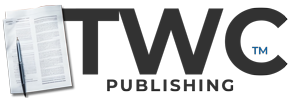Navigating Counterproductive Work Behaviour at NeoTech Solutions
No Fee
| Case ID: | OBH-NEOT-20230701-3-V1 |
|---|---|
| License: | CC BY-NC-SA 4.0 |
| Pages | 4 pgs |
| Case Study Analysis | Not Included |
| Teaching Notes | Not Included |
| Ai Level | Content co-authored with the OpenAI API |
| Category(s) | Organizational Behavior – 8/10 |
In the case study “Navigating Counterproductive Work Behaviour at NeoTech Solutions,” we delve into the challenges faced by NeoTech Solutions, a technology-oriented organization on the brink of launching a groundbreaking AI product. Despite their impressive financial success, the company grapples with escalating instances of Counterproductive Work Behavior (CWB) among employees, leading to concerns about its impact on productivity and team morale. The CEO, Jim Ross, faces the critical decision of how to effectively address the CWB issue, with conflicting suggestions from executives on the approach to take. As the case unfolds, we explore the implications of CWB on organizational behavior and leadership, providing valuable insights for students studying courses in Organizational Behavior, Leadership, Human Resource Management, and General Management. The case highlights the importance of understanding and managing employee behavior for sustainable success and offers an engaging platform for students to analyze real-world decision-making dilemmas faced by business leaders.
The top 5 course categories and then analyze the strengths and weaknesses of the case structure.
Top 5 Course Categories:
- Organizational Behavior - 8/10
- Leadership - 8/10
- Human Resource Management - 7/10
- General Management - 6/10
- Ethics - 6/10
Weaknesses of this Case Structure:
- Realism: While the case presents a plausible scenario of a technology-oriented organization facing counterproductive work behavior, it lacks specific real-world examples or data to anchor the challenges and decision-making process in reality. The absence of concrete incidents or industry-related facts may limit its application in practical situations.
- Data Analysis: The case lacks comprehensive data analysis of the counterproductive work behaviors' root causes and its impact on employee morale and productivity. More in-depth data and analysis would have strengthened the case's persuasiveness and provided a better basis for decision-making.
- Impact: The case mentions the potential consequences of CWB on the organization, but it does not delve into the long-term repercussions in detail. Exploring the wider impact on the company's reputation, customer satisfaction, and employee turnover would have added depth to the case study.
- Scenario Development: While the case briefly introduces the company's growth and financial success, it doesn't provide a detailed background or context for the technology industry and the challenges faced by startups. A more comprehensive scenario development could have made the case more immersive and engaging.
Strengths of this Case Structure:
- Topic Relevance: The case effectively addresses the important topic of Counterproductive Work Behavior (CWB) in the context of organizational behavior and leadership. It highlights the significance of understanding and managing employee behavior for sustainable success.
- Practical Implications: The case study presents a relevant and realistic problem faced by many organizations, offering valuable insights into the complexities of addressing CWB and its management. It allows students to apply theoretical concepts to real-world situations.
- Integration of Multiple Course Categories: The case integrates various course categories, such as Organizational Behavior, Leadership, and Human Resource Management. This multidisciplinary approach enhances its applicability in different business-related courses.
- Decision-Making Dilemma: The case effectively puts the CEO, Jim Ross, in a challenging decision-making position, presenting him with different alternatives to address CWB. This engages students in critical thinking and analysis of potential solutions.





